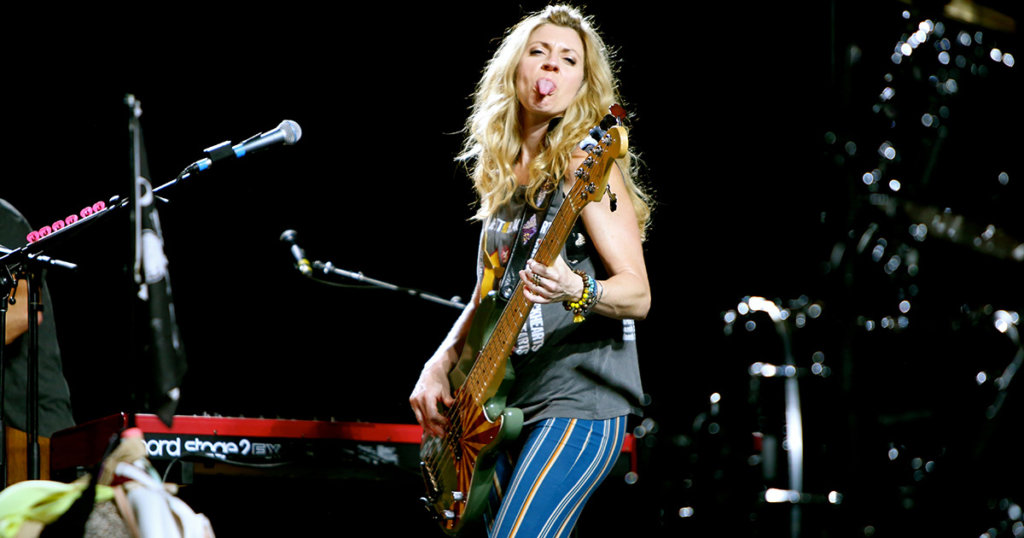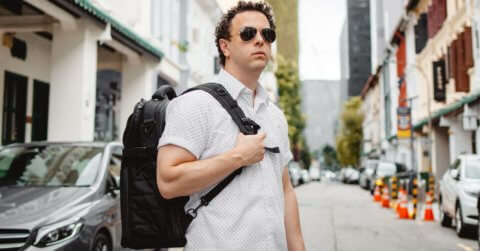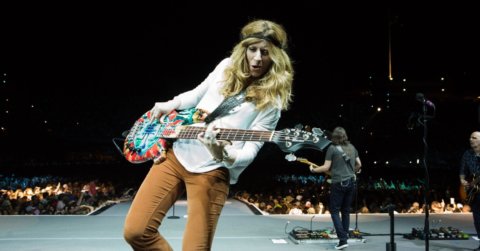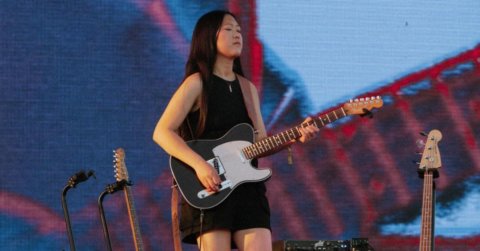Growing up with a guitar playing dad and constantly surrounded by music, Harmoni has lived up to her name in style.
It wasn’t until age 17 when she picked up her first instrument – the bass guitar – so she considers herself somewhat of a late bloomer. But that hasn’t got in her way of scooping up accolades like Bassist of the Year at the 2009-2010 Austin Music Awards. Rising through the ranks in a variety of Austin groups, Harmoni cut her chops with artists and bands such as Fastball, Bob Schneider, James McMurtry and many more. After relocating to Nashville, Tennessee in 2013, she began working with Grammy-nominated singer-songwriter, Radney Foster, and today, handles bass and vocal duties with country superstar Kenny Chesney.
We chat with Harmoni and find out about her beginnings in music, touring with Kenny Chesney, and geek out on her bass rig.
How did you end up playing bass guitar? Was there a reason you picked up the bass instead of the guitar, or piano, or any other instrument?
My Dad has always played guitar, sung and written songs since I can remember, so there was always music around. And, when he wasn’t playing, there were always great records spinning, Little Feat, The Beatles, The Band, Taj Mahal, The Rolling Stones. So, I think in a way, all of those really rootsy, rhythm and blues, groove-centric bands had a big impact on what my ear chose to pick out. My Dad never pushed me to play guitar but when I expressed interest in playing the bass at 17, he was quick to start including me in smaller, live gigs so that I could get the hang of playing with people and learn how to watch and listen.
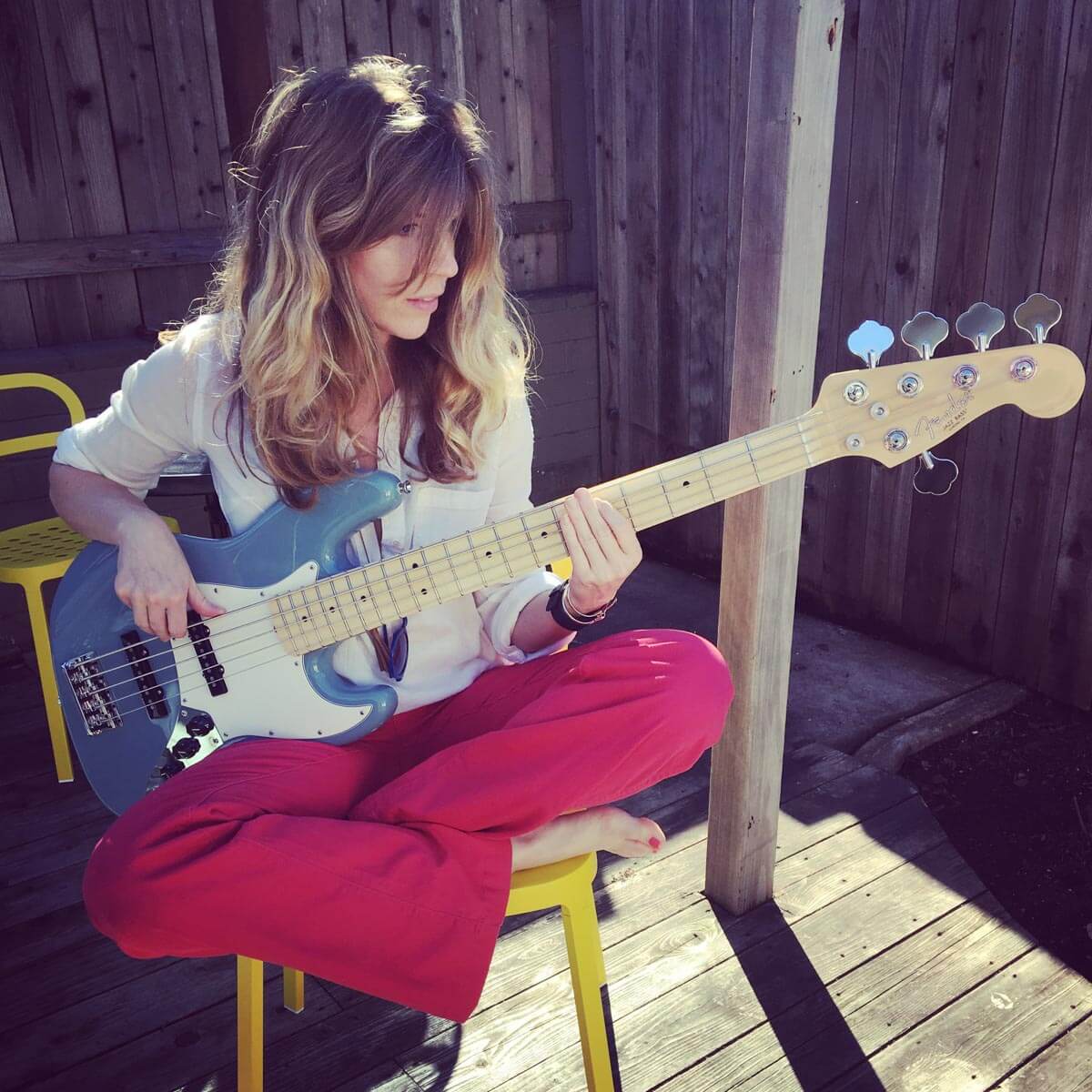
Did you end up going to school for music or taking lessons?
After my parents got me a bass at 17, I did the only thing that felt right to me when it came to learning music – I sat on the floor in the living room and started playing along to records and CDs that my parents were listening to. I was already hearing the bass, so it was more about understanding the fretboard and the finesse of plucking the strings along with the music. My Dad had gotten me one of those “Learn to Play Bass” books by Mel Bay, which didn’t make a ton of sense to me in terms of reading the music. The one thing that I did use from that book was a full two-page spread of the neck of the bass that showed where all of the notes fell. Using that, I cut out small squares from different colored construction paper and taped them up and down the fretboard to give me a visual map of where all of the notes were. So, all of the E’s were represented by blue squares, A was red, G was pink, and so on. I started to see patterns and I was eventually able to take them off. I tried taking a music theory class in college after I had already been playing bass for a while and it felt like I was moving backwards. I took one lesson from a friend of mine in Austin when I needed to work on my slap technique, but that’s pretty much it. My teachers were always the players on the records that I was listening to and playing along with.
Who were some of your musical heroes when you were growing up, and who are your biggest influences today?
Honestly, as a teenager, I was such a big Guns N’ Roses fan and I wanted to be Duff McKagan. I’d watch videos of them playing and want to emulate him. There was something about it that really drew me in, but it was almost more of his rock and roll swagger and presence that spoke to me rather than his playing style specifically.
After hearing that D’Angelo “Voodoo” record, I was SO enthralled by Pino Palladino. What a monster! I’ve also always been a fan of Meshell Ndegeocello, as a bass player and an artist in general. I got really into Justin Meldal-Johnson after going to see Beck live many years ago. He completely made me do a 180 when it came to my thoughts on playing with pedals and a pick.
How has your touring experience with Kenny Chesney been so far? Any memorable moments to share?
It would probably be an understatement to say that it’s been a life changing experience for me. Never in all my years of loading gear in the back of a van, driving 20 hours across country, sharing hotel rooms with band members, playing to literally no one (the list goes on)… did I ever think that I could here be doing this? I guess it’s what we all dream of on those days when we’re schlepping a shitty bass amp into a boiling hot storage unit, aka practice room, in the heat of an Austin, TX, summer, dredging through original material with the hopes that someone will listen and we’ll be discovered. But man, when you get to that place, it’s a little overwhelming! That first time I stepped out onto a stadium stage my first year and that Austrian curtain went up when the chorus of the first song kicked in, it almost took my breath away. The power of that crowd and that many people, it’s incredible. Four years later, it still has me in awe.
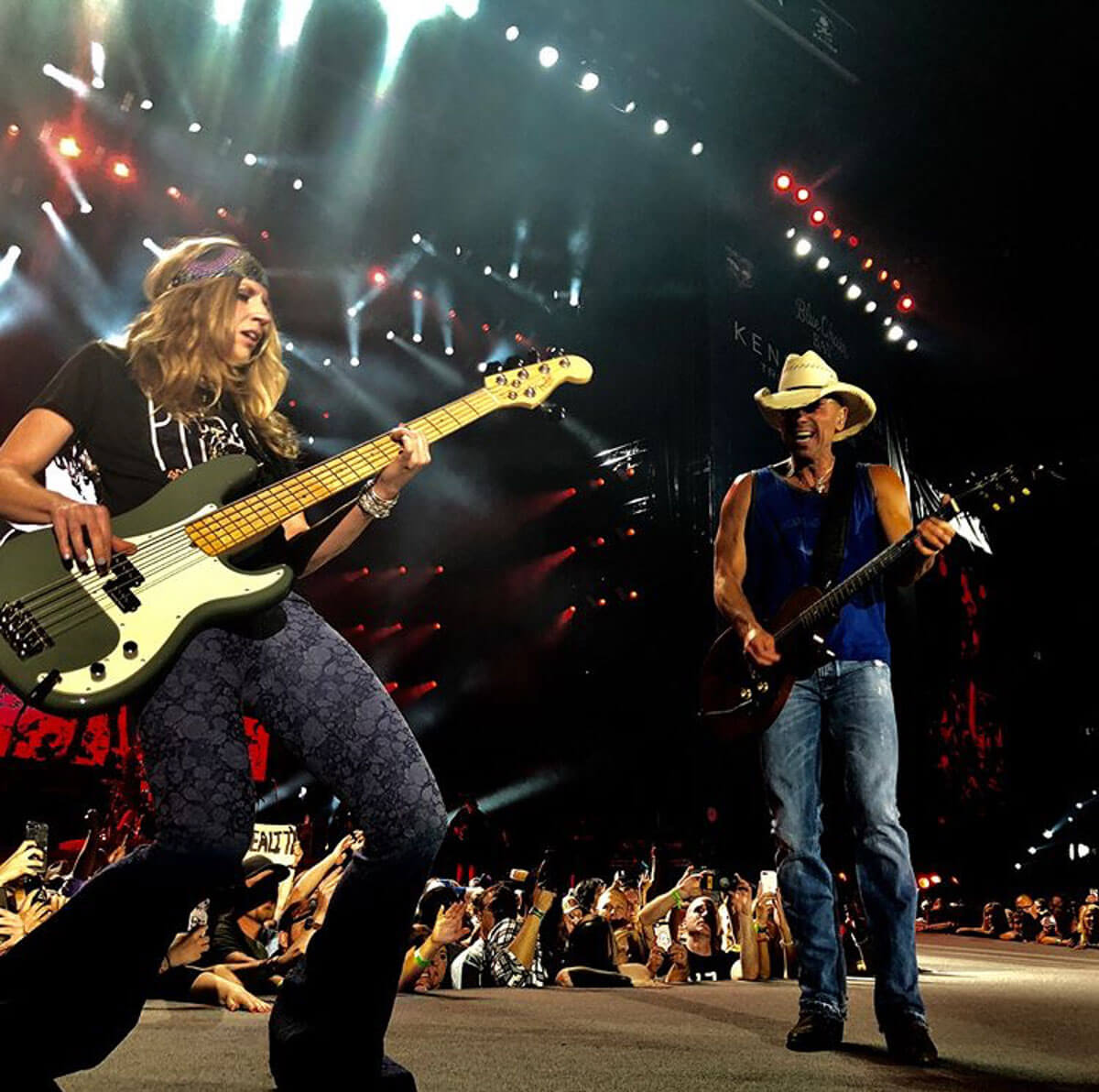
You have a long list of big names you’ve worked with, like James McMurtry, Bob Schneider and Fastball. Have you changed or evolved as a player working with different artists?
Absolutely! That’s one of the things I love about being a bass player. During the time you play with someone, you really get to step into their world and get entrenched in their style. For instance, when I played with Bob Schneider that was one of those “fly by the seat of your pants” gigs, which I truly love. Hardly ever a set list and, on top of that, he wouldn’t even call songs. He’d just start playing guitar or keys and you’d have to mentally scan his enormous catalogue of songs to figure out what on earth he was playing. Sometimes that didn’t work out so well, but I think that’s also part of the free-form fun of that style. It forces you to pay attention, listen and watch. It’s nerve-racking, I’m not gonna lie! That gig taught me so much in that way. I also played with a guy named Jon Dee Graham and he was like a caged animal on stage. You never knew what he might do or play. Another one of those, watch me for the chord changes and try to keep up gigs! There were other gigs with James McMurtry, Fastball and Radney Foster that were pretty heavy on the background vocals, so I really had to hone those skills. When I got the gig with Chesney, I had to really come out of my shell as a bass player. Not so much in the chops and style department, but more in terms of movement and stage presence. We’re wireless and, especially at those stadium gigs, there’s a LOT of ground to cover. Standing back by the drummer and holding down the fort was no longer an option. I was suddenly expected to run out onto the catwalk, drop to my knees, jump around, throw some picks into the audience… very out of my comfort zone! But, I’ve honestly grown to love it.
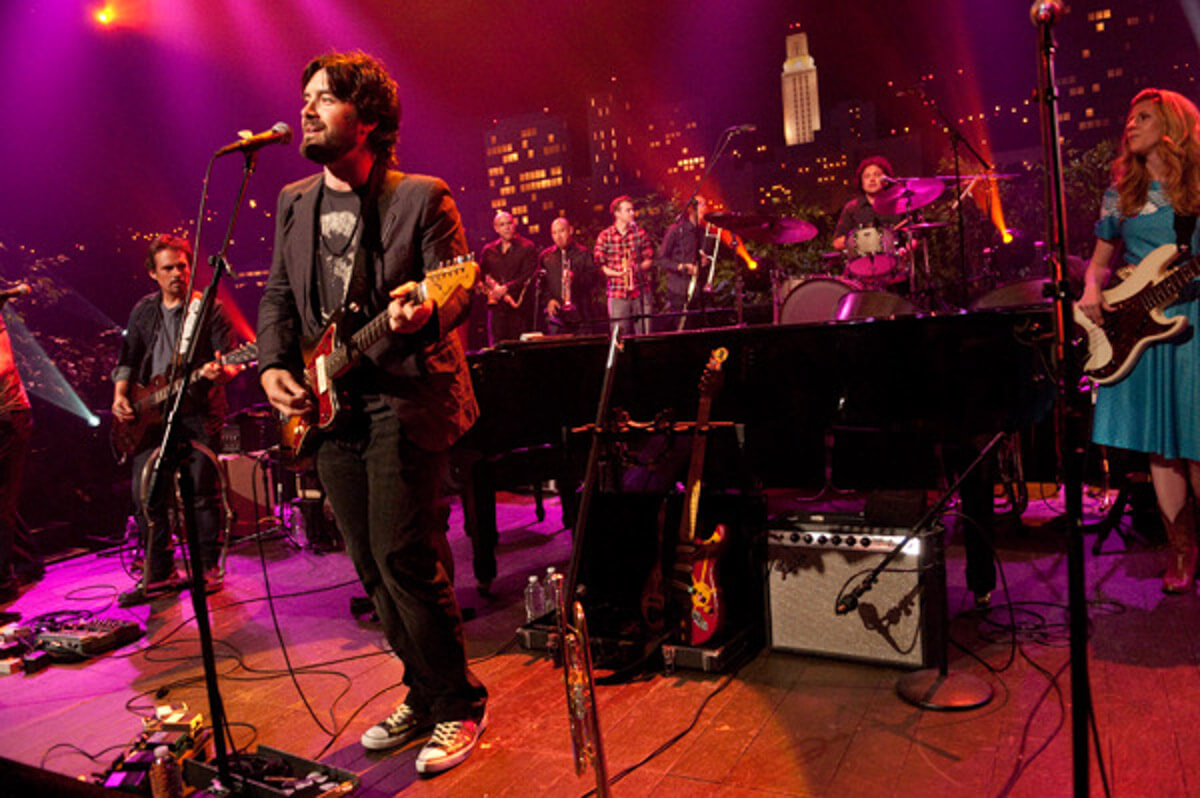
If you could share the stage with anyone, past or present, who would that be, and why?
Hands down – David Bowie. He’s been a favorite of mine since I was young. He was fearless, you know, always taking chances and pushing the envelope with sound, music genre, sexuality, art. I just loved him for that. I think he was one of the pioneers, no question. I’ve heard Gail Ann Dorsey talk about playing with him and he just sounded like such a wonderfully supportive person, full of passion for the craft. Someone you’d really want to share the stage with.
Let’s talk about your gear. What does your normal set up look like when you’re on stage?
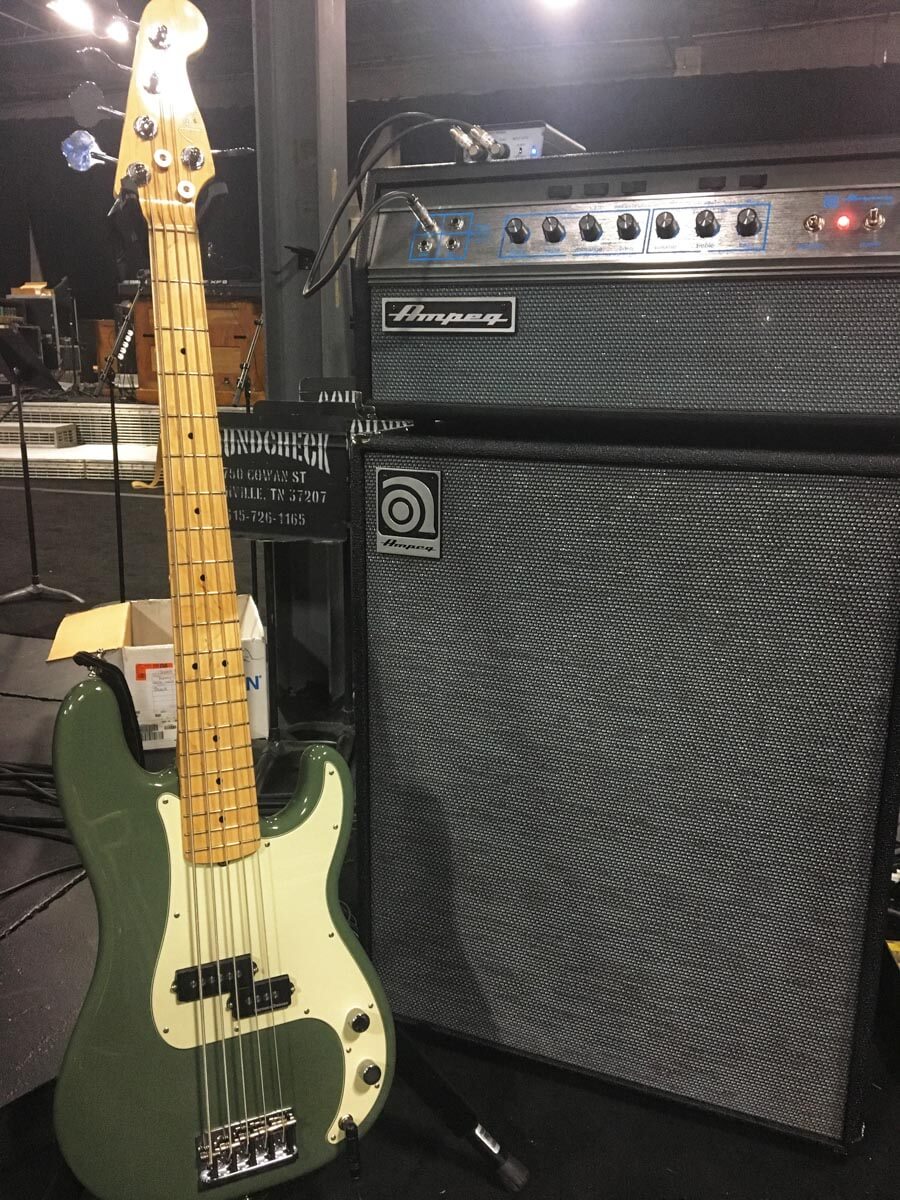
For my current gig, I play a Fender American Professional 5-string P bass with Seymour Duncan Quarter Pound pickups through an Ampeg SVT VR and an 8X10 cab, which lives in a sled underneath my grated platform on the set. I’ve also got an ISO box just offstage with a PF20T into a PF115HE that’s blended into my sound. We’ve also got a Neve DI that we use as well. We move around so much on stage that, my in-ear monitor mix has to be consistent. Luckily, we’ve got one of the best monitor engineers out with us and having the JH Audio Roxanne also helps!
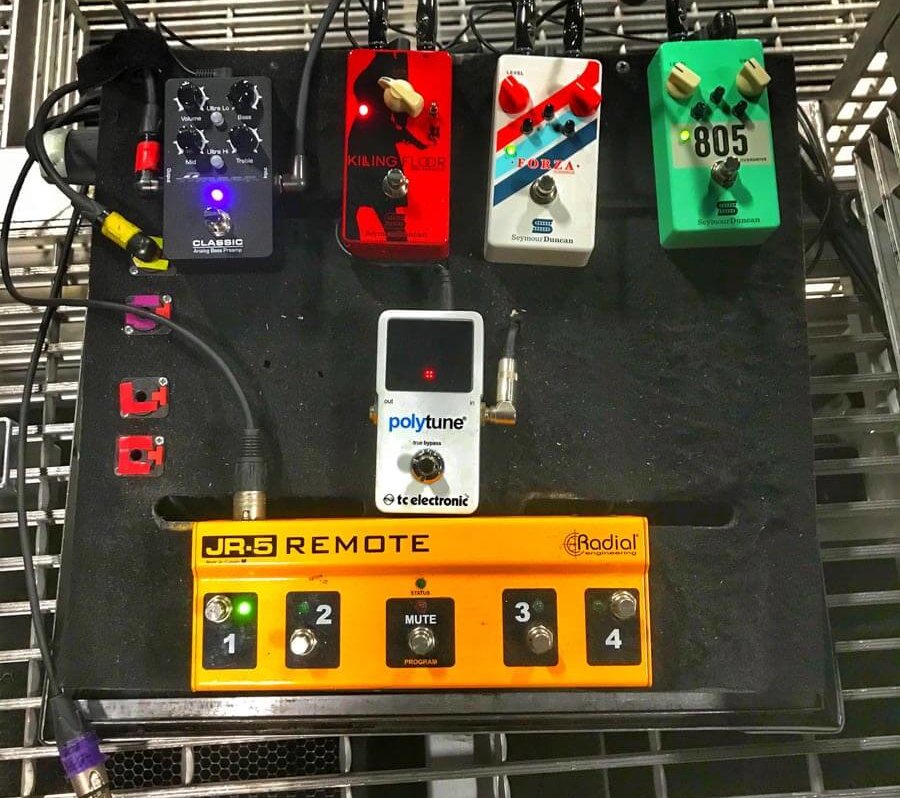
I have a small pedal board that, up until this year, only had a tuner and a switcher for my back-up bass. What can I say, I’ve always been a meat and potatoes player! But, I’m branching out. On a handful of songs this year, I used an Ampeg Liquifier chorus pedal and a couple of Seymour-Duncan overdrive pedals, the Forza and 805.
How many bass guitars do you own? Do you have a favorite at home or is it the one you play on stage?
I own about 12 basses right now between my Fenders, a couple of Music Mans, a Gibson and a couple of Kala U-basses. Up until the gig with Chesney, I was really primarily a 4-string bass player. When I got the call to audition and listened to the material, I knew that I had to bring it with a 5-string. Since then, I have a couple of 5-string Ps and a Jazz that I got from Fender that are fantastic. I also recently got an American Original 60’s reissue 4-string P bass that plays like a dream and has become one of my new favorites. It’s also Lake Placid Blue, which has always been one of my favorite colors. My favorite bass is a creamy white ’72 P with a red tortoise pick guard. She lives at home these days, unless I’m gigging locally.
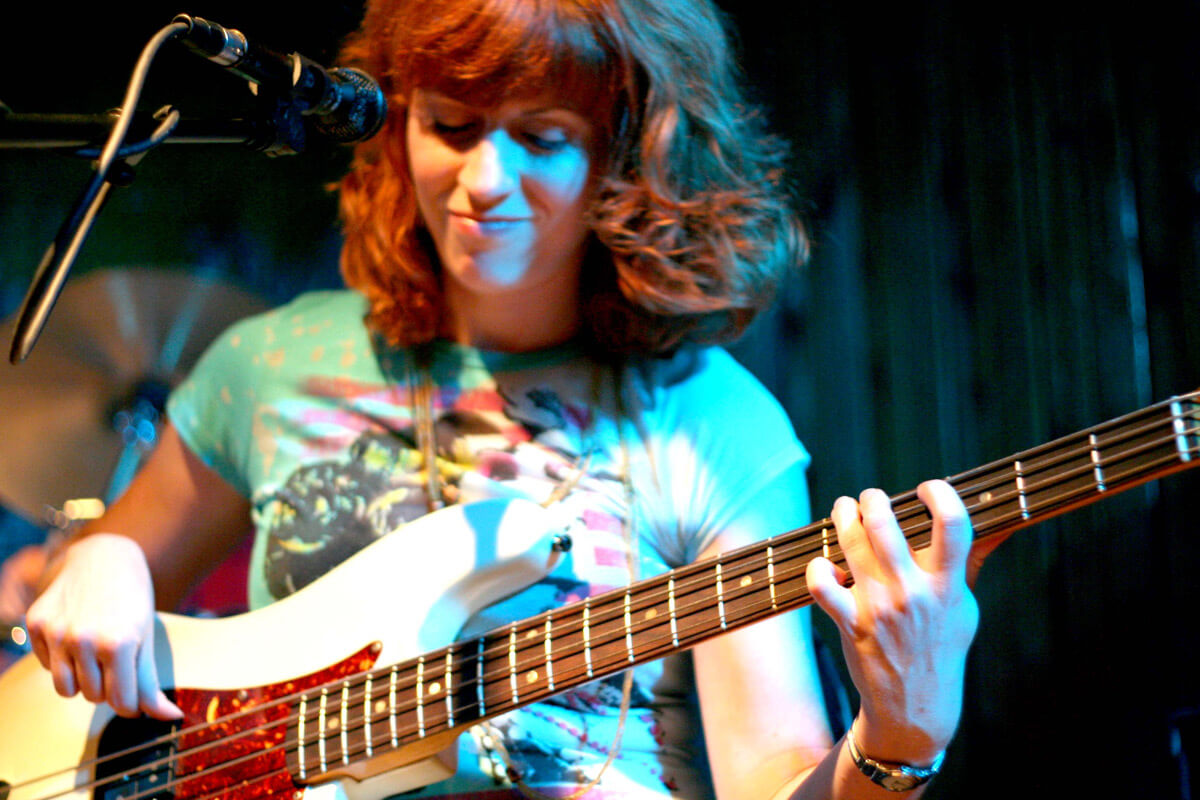
Is there a particular tone you try to go for? Which bass players have some of your favorite bass tones?
I’ve really always been one of those people who thinks a bass should sound like a bass. Like I said, I do have a new appreciation for pedals and think they can be an awesome addition on some songs and/or for the right gig. Overall though, I want a bass to have that warm, buttery, syrupy tone. Something that just glides under everything else and creates this soft bed for everything else to lie on. Thomastik-Infeld strings on a P bass is one of my favorite things. I think James Jamerson, Pino, Duck Dunn, Meshell – they all had it right in my book.
What MONO products do you use at home, on tour or in the studio? What is it about them that you like and why?
The MONO Vertigo Bass case has saved me. I don’t know how I was comfortable traveling with my bass before, especially on an airplane. There’s so much uncertainty there already that you really want to be absolutely sure that your guitar is safe. This case finally made that a reality for me. It’s such a perfectly snug fit when it slides in and I feel completely confident that the neck will be safe in the Headlock, which is super important. And, the rubber Boot on the bottom… Why aren’t more gig bags made this way?!?
What does the future hold for Harmoni Kelley? What’s next?
I’m such a busybody. I love this gig with Chesney and I hope that I have it for as long as he’ll have me. But, when we’re off, I always look forward to playing with as many people as I can. I have trouble sitting still. I’ll be doing some shows this fall and into the new year with my friend Bonnie Bishop, which is exciting. She just wrapped a record with Steve Jordan in NYC, so you never know what could happen there.
I’ve had this thought that I might start a project of my own at some point in the future. Stay tuned!
Check out Harmoni’s MONO Vertigo case here, and the full catalog here.
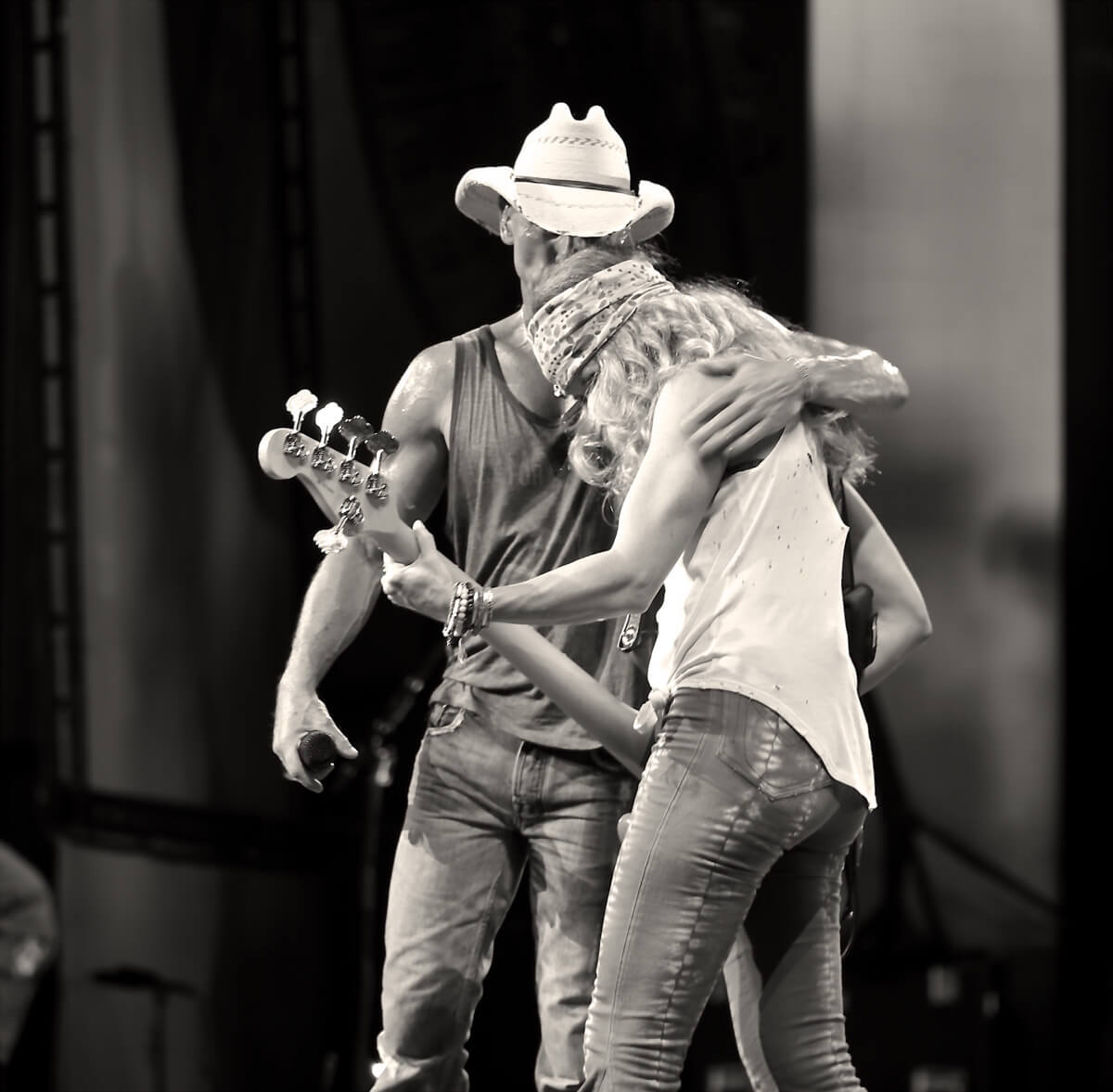
Photo credits:
Brian Littleton
Jill Trunnell
Shannon Brackett
Melvin Fults
